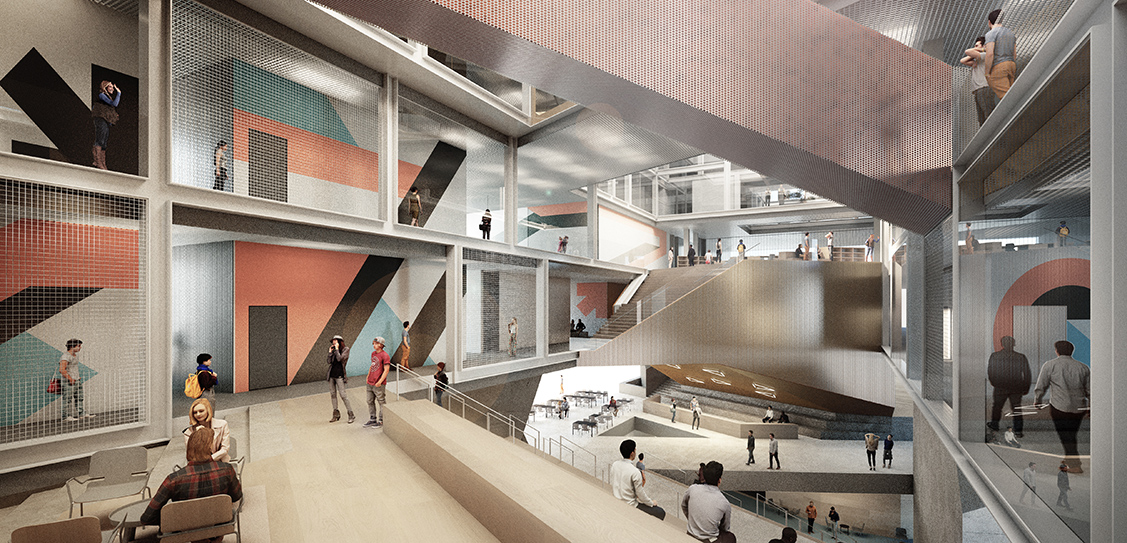The new facility, Instructional Centre Phase 2 (IC-2), is a dynamic ‘learning landscape’ that promotes agile and asynchronous education through a complex arrangement of rooms and open public spaces spanning multiple floors; drawing inspiration from the form of a 19th-century printer’s tray.
Artificially created terrain spills from the outside in, creating a hybrid of social and study areas that stimulate and support vibrant campus life. Students have access to a multitude of flexible, technology-enabled spaces, including 21 classrooms of various sizes and configurations ranging from a 500 seat auditorium to smaller 24 seat active learning environments.
Learning spaces sit on top of one another, creating opportunities for platform and bleacher seating space known as the Knoll, which scales the roof of the 210-seat Butterfly Cave tiered auditorium.
Meanwhile the Coffice - a large study/social space - sits atop the Campfire auditorium, a multi-purpose hexagonal lecture theatre that seats 500 and protrudes two metres above the ground floor. Ascending rows allow for spatial flexibility and creates a dynamic viewing experience for students with the presenter positioned at the centre. The design also promotes immersive learning in an interactive, asynchronous environment with surrounding digital screens.
The framed grid that forms the building’s façade creates a design that combines various volumes, scales, surfaces and spatial qualities. Inspired by the form of Printer’s Tray predominantly used during the 19th Century, the building’s four distinct façades mirror the tray’s compartments and represent the diversity of spaces and educational environments within.
Building on the notion of a building hovering above, the recessed grade level façade is highly transparent with structural glass panes free from mullions. The ‘learning landscape’ extends horizontally across the entire ground floor, enriching student flow and wayfinding.
Inspired by the Highland Creek ravine that weaves through the campus, the design is guided by the desire to extend green space indoors. Meanwhile, two rooftop gardens also merge indoor and outdoor spaces to enhance the public realm within the building’s upper levels.
Elements of health and wellness are woven into all aspects of the design but are central to the fifth floor, where the campus-wide Student Affairs programmes will be consolidated and prioritised into one central and accessible space.
This includes counselling and mental health resources, a meditation and breastfeeding room, a physician and nurse office, academic advising and accessibility services, and multiple coworking spaces that encourage peer collaboration.



